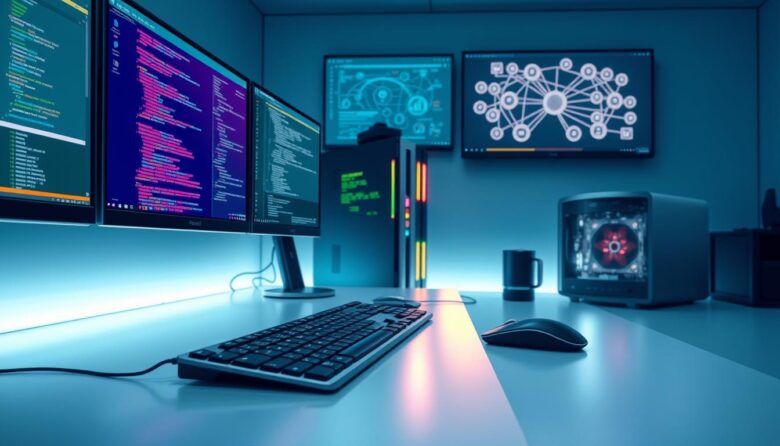Your smartphone or computer holds hidden potential beyond everyday use. Developer mode tools transform standard devices into powerful platforms for technical customization and performance analysis. These specialized features remain intentionally concealed to prevent accidental changes to core system operations.
Modern operating systems contain sophisticated controls for USB debugging, memory allocation, and battery optimization. While factory settings prioritize simplicity, activating these options reveals professional-grade utilities. Tech professionals rely on them for app testing, network diagnostics, and hardware monitoring.
Android and Windows handle access differently. Mobile devices often require tapping the build number multiple times, while computers use dedicated system menus. Both approaches ensure only informed users modify critical configurations.
The benefits extend beyond basic troubleshooting. Advanced functionality includes real-time GPU rendering data, Bluetooth protocol adjustments, and audio codec overrides. These tools help optimize application performance across devices without compromising security protocols.
Understanding this hidden layer empowers users to customize their experience while maintaining system stability. Whether refining app responsiveness or analyzing data flow, these settings provide unprecedented control over device behavior.
Understanding Developer Mode and Its Benefits
Behind your device’s standard interface lies a toolkit designed for technical mastery. This specialized environment, often called developer mode, offers precision controls for both app creators and power users. It transforms everyday gadgets into customizable platforms without altering their core stability.
What Is Developer Mode?
These advanced options provide direct access to system behaviors typically hidden from regular users. On Android devices, the menu includes USB debugging for app testing and GPU rendering controls. Windows systems unlock SSH services and performance optimizations through similar configurations. Access requires deliberate activation to prevent accidental changes to critical operations.
Key Advantages for Developers and Users
Technical teams gain real-time monitoring tools for tracking memory usage and app responsiveness. Features like visual tap indicators help refine user interface designs during app development. For everyday use, battery optimization profiles and Bluetooth protocol adjustments enhance device efficiency.
Security remains prioritized through confirmation prompts for sensitive actions. Network diagnostics and audio codec selections further demonstrate how these tools benefit multiple user groups. By balancing accessibility with safeguards, developer mode delivers professional-grade capabilities without compromising system integrity.
How to enable developer settings on Android Devices
Android devices contain specialized tools accessible through deliberate activation steps. Unlocking these features requires navigating specific menus that vary across manufacturers. This process ensures only informed users modify critical system parameters.
Locating the Build Number and Activating Developer Options
Find the build number in your device’s settings menu. Google Pixel models place it under About phone, while Samsung devices nest it within Software information. Tap this entry seven times consecutively until a confirmation message appears.
The seven-tap requirement acts as a safeguard against accidental activation. This standardized method works across Android versions from 4.2 onward. Once enabled, a new “Developer options” section appears in system settings.
Enabling USB Debugging and Essential Tools
Navigate to the freshly unlocked developer options screen to activate crucial features. USB debugging sits under System settings in Android 9+ devices. This function permits direct connection between your phone and development computers via Android Debug Bridge.
Additional tools become available post-activation. Generate detailed bug reports, monitor background processes, or test Bluetooth protocols through HCI snoop logs. These utilities support app testing while maintaining default security measures.
Exploring Advanced Debugging and System Tools
Modern smartphones house sophisticated diagnostic utilities that reveal detailed performance insights. These tools empower users to analyze app behavior and optimize resource allocation through precise controls.
USB Debugging and Bug Report Options
USB debugging creates direct communication between your phone and development software. This feature allows real-time code testing through Android Studio. When activated, developers can deploy updates instantly or pause executions to inspect variables.
Bug reports capture snapshots of system data, including crash logs and memory allocations. These files help identify freezing issues or battery drain patterns. Persistent logger options store critical information without overwhelming storage space.
Using Visual Feedback and Memory Monitoring
Screen overlays display tap locations and touch gestures during app testing. This visual feedback helps refine button placements and swipe sensitivity. Pointer tracking highlights exact coordinates for complex animations.
Memory statistics show real-time usage across active applications. Developers spot leaks by monitoring average consumption versus available resources. Detailed breakdowns reveal which processes drain performance.
Mock location services simulate GPS coordinates for travel apps. This eliminates physical movement during accuracy tests. Combined with layout inspectors, these tools streamline troubleshooting workflows.
Optimizing Network, Media, and Input Settings
Modern devices offer precision controls for refining connectivity and interaction patterns. These configuration tools help balance performance with energy efficiency across wireless protocols and multimedia systems.
Configuring Wi-Fi, Bluetooth, and Audio Options
Network diagnostics reveal hidden details through Wi-Fi verbose logging. Aggressive handover settings improve cellular-to-Wi-Fi transitions during video calls. Wireless display certifications ensure compatibility with smart TVs and projectors.
Bluetooth adjustments let you prioritize audio quality or battery life. Choose between aptX HD for studio-grade music or AAC for balanced performance. USB configurations streamline workflows—switch between file transfers and MIDI instrument connections instantly.
Customizing UI Feedback with Pointer Location and Tap Indicators
Visual feedback tools transform touch interactions into measurable data. Pointer tracking overlays display exact coordinates for testing complex gestures. Tap indicators show duration and pressure levels during app prototyping.
These features help identify unresponsive buttons or accidental swipe triggers. Combined with animation scale adjustments, they create smoother user experiences. Real-time input visualization works across games, navigation apps, and drawing software.
Developer Mode for Windows: Device Portal, SSH & More
Windows systems provide distinct technical capabilities through integrated management interfaces. The Device Portal serves as a centralized hub for configuring desktops, IoT hardware, and gaming consoles. This web-based tool simplifies remote diagnostics and cross-platform application deployment.
Setting Up Device Discovery and SSH Services
Activate Device Discovery to unlock secure remote access features. This process generates unique PIN codes for SSH authentication using the DevToolsUser account. Connected computers gain SFTP access to manage development files through the Windows subsystem.
SSH services differ from standard implementations, using Microsoft’s dedicated broker and proxy components. These maintain encrypted connections during app testing and system updates. Pairing occurs through the Device Portal interface after enabling discovery mode.
Troubleshooting Installation and Package Issues
Common errors like code 0x80004005 often stem from missing system updates. Ensure KBs 4016509 and 3197985 are installed before modifying configuration settings. Network restrictions or admin privileges may block package installations.
Failed deployments require checking firewall rules and storage permissions. Manual file transfers via SFTP bypass some limitations when automated tools malfunction. Regular system scans verify component integrity across Xbox and HoloLens platforms.
These Windows-specific tools empower technical teams to maintain robust development environments. From real-time diagnostics to secure remote access, they streamline complex workflows while protecting core operations.



